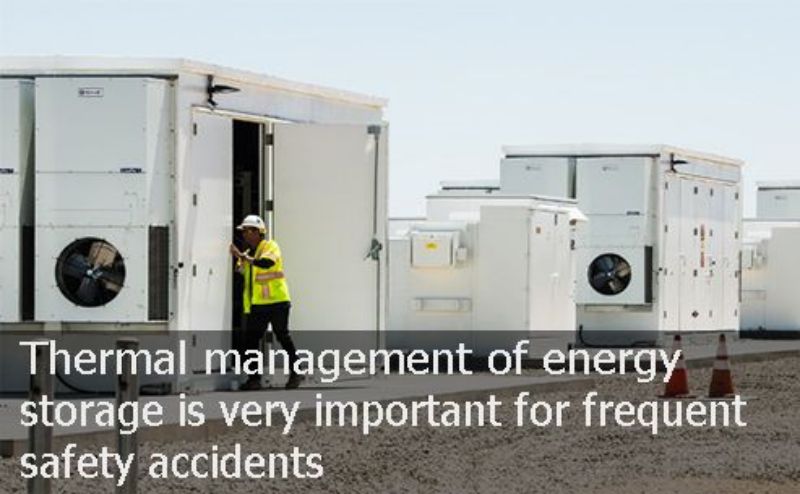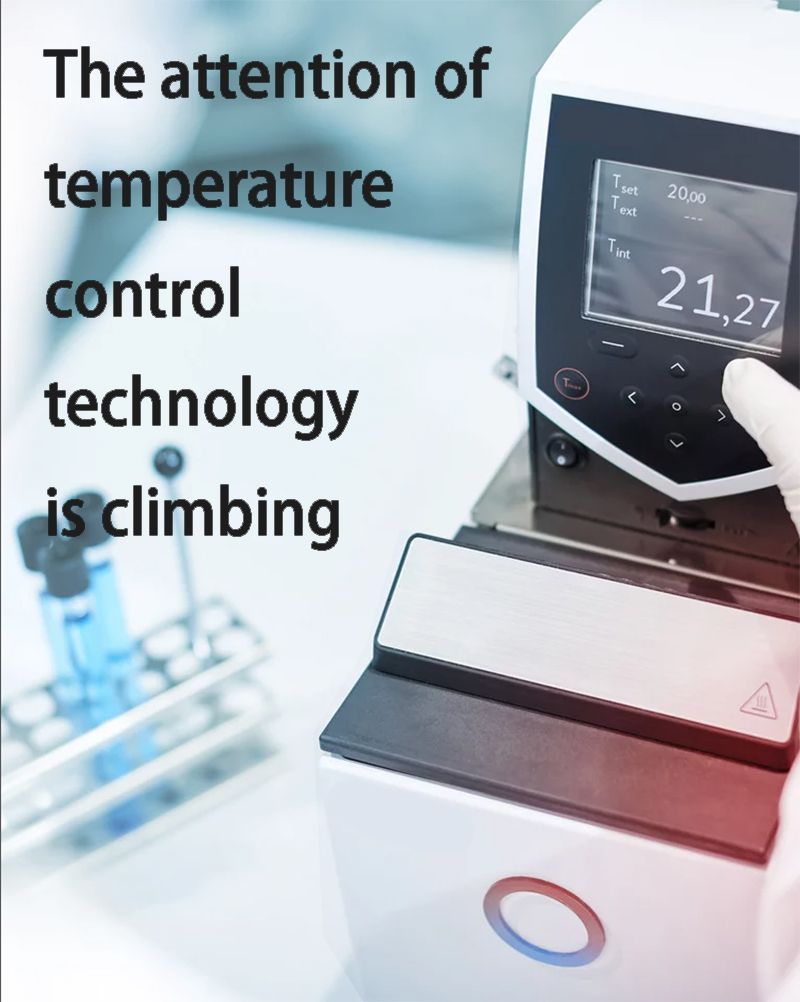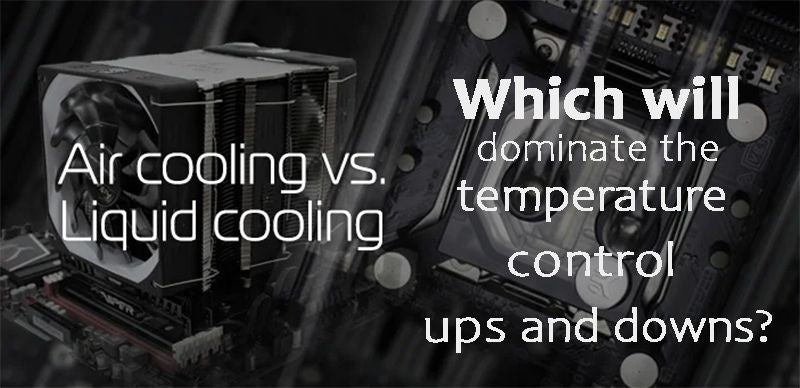
Main content:
- 1.Battery thermal runaway is closely related to system-level thermal management
- 2.The attention of temperature control technology is climbing
- 3.Which will dominate the ups and downs of temperature control? Air cooling or liquid cooling?
- 4.Several major energy storage/temperature control giants in China have carried out forward-looking layout
Dual carbon policy and lower battery cost will drive the high growth of electrochemical energy storage market. Safety is always the first line of defense for energy storage development. On April 18, a fire broke out at an energy storage power station in Arizona, the event continues to simmer. An industry source said it was too early to speculate on the cause of the accident, stressing that resolving the problem safely was the priority among priorities. Safety accidents occur frequently, and the uncontrolled thermal management of energy storage may be the main reason. Thus it can be seen thermal management of energy storage is very important for frequent safety accidents.
1.Battery thermal runaway is closely related to system-level thermal management
Take stock of the causes behind major fire accident, battery thermal runaway is also one of the main causes of frequent accidents in energy storage power stations, which is not only related to the battery itself, but also inseparable from the system-level thermal management.

Due to the large number of batteries gathered in the energy storage system, battery capacity and power is larger, a large number of cells closely are arranged in a space, operation condition is complicated, sometimes high-magnification, sometimes low range, easy to cause uneven thermogenesis, uneven distribution of temperature, large temperature difference between battery problems, cause the battery charge and discharge performance, capacity and life. Thus, the performance of the entire energy storage system will be affected. In serious cases, thermal runaway will be caused, resulting in safety accidents.
2.The attention of temperature control technology is climbing
Under the trend of large capacity of energy storage system and high battery rate, energy storage temperature control technology becomes more and more important. Industrial temperature control technology is the core technology of thermal management in electrochemical energy storage system. The temperature control system provides heat dissipation for energy storage battery cell through coolant or air, so as to ensure the safe and reliable operation of energy storage system and prolong the operating life of energy storage battery.
According to data review, frequent fire incidents in energy storage power stations in recent years have restricted the development of energy storage to a certain extent, but also attracted more attention to enterprises engaged in thermal management. From a longer-term perspective, the occurrence of the accident will urge the improvement and formulation of industry rules, systems and standards, but is conducive to the rapid development of energy storage industry in the future.

So far, energy storage temperature control enterprises generally start from other circuits, mainly precision temperature control enterprises, new energy vehicle temperature control enterprises and industrial temperature control enterprises. Shenling announced on April 12 that it intends to raise less than 800 million RMB for intelligent temperature control equipment intelligent manufacturing project in the new infrastructure field, actively layout power temperature control equipment and energy storage thermal management, further improve the capacity of specific temperature control products, and give full play to scale effect. Tongfei announced on April 24 that it plans to build an energy storage thermal management system project with a total investment of 550 million RMB.
On April 25th, Envicool issued its annual verification report on the use of its funds. In 2021, it raised about 310 million RMB (pre-tax) through non-public stock offering for the construction of precision temperature control and energy saving equipment South China Headquarters Base Project (phase I), which will be used to expand the capacity of the company's data center, 5G base station, energy storage and other temperature control and energy saving products. In the future, with the development of energy storage system towards large capacity and high magnification, the heat production of energy storage system will continue to rise, and the demand for temperature control is expected to continue to increase.
3.Which will dominate the ups and downs of temperature control? Air cooling or liquid cooling?
From the perspective of technology development route, the current mainstream temperature control thermal management methods in energy storage industry include air cooling and liquid cooling, and the technologies under development include heat pipe cooling and phase change cooling. At the technical level, air cooling has the advantages of mature scheme, simple structure, easy maintenance and low cost. However, due to the low specific heat capacity and low thermal conductivity of air, it is more suitable for communication base stations with relatively small power and small energy storage systems.
In liquid cooling mode, the temperature difference between cells is smaller, the service life is longer, the heat dissipation system is more efficient, the cooling uniformity is better, and the battery can be charged and discharged at large rate for a long time. In addition, the liquid cooling technology system has better adaptability. The heat dissipation system occupies a smaller area, has lower energy consumption, lower failure rate and lower maintenance cost.

Thermotube and phase transition are both in the research stage and have not been used in battery energy storage system, so they are not compared for the time being. In the comparison of market share, air cooling currently occupies a high permeability due to better technical economy, higher reliability and low energy storage refrigeration power requirements at the initial stage. However, large energy storage has the characteristics of large capacity and complex operating environment, which requires higher temperature control system and is linked to the precision of coolant.
Moreover, in recent years, the policy gradually incline to large-capacity shared energy storage projects, and the record volume of large-capacity projects increases rapidly, which is expected to greatly drive the penetration rate of liquid cooling technology in the energy storage temperature control market. An industry insider said that in general projects, customers choose air cooling or liquid cooling, mainly depending on the budget of a project. Because liquid cooling is more expensive than air cooling. At present, liquid cooling technology has been used in China. Specialists said that in some projects, the technical route of liquid cooling in reliability, cooling, battery life stability are better than air cooling, even if the cost of liquid cooling is higher than air cooling, but now some customers still choose liquid cooling technology route.
4.Several major energy storage/temperature control giants in China have carried out forward-looking layout
For the moment, several major energy storage/temperature control giants in China have carried out a forward-looking layout, and the "players" include CATL, SUNGROW, GOALAND, Tongfei, BYD and so on. The leading demonstration effect will drive the acceleration of liquid cooling penetration. You may be interested in other information about the energy storage battery industry. If you want to get to know more about the home energy storage companies in China, you can read the Top5 home energy storage companies in China in 2021 in our website. In that article, we introduced Top5 home energy storage companies in detail.
















